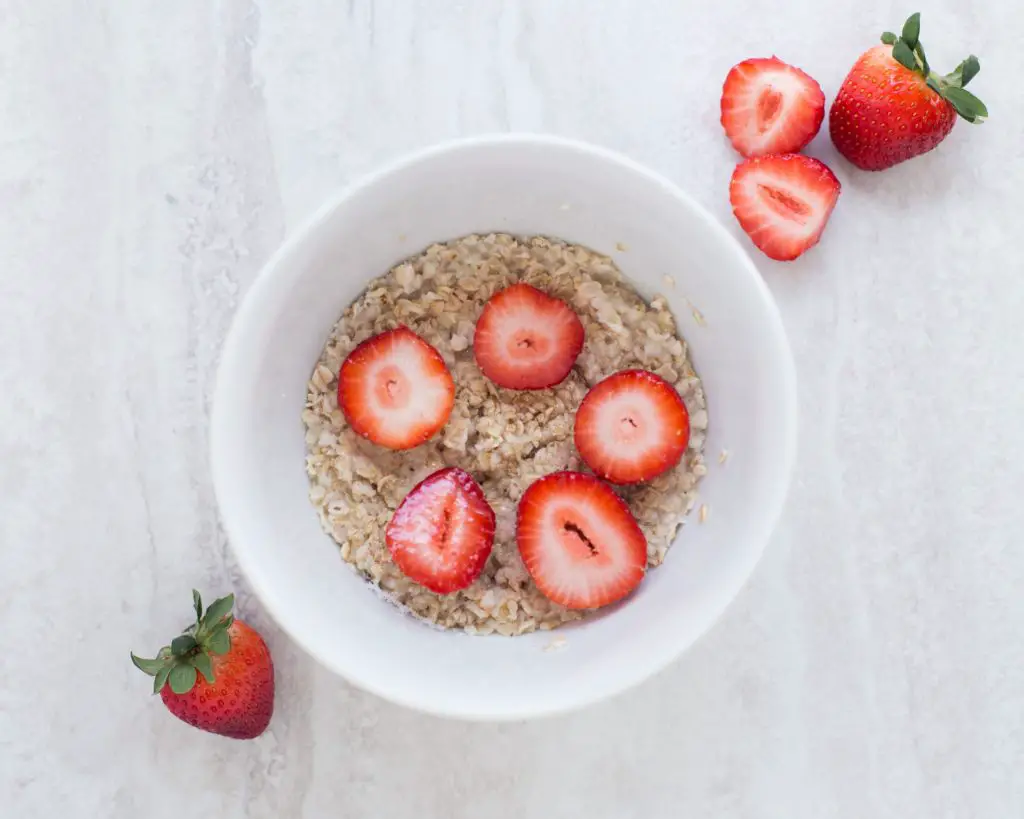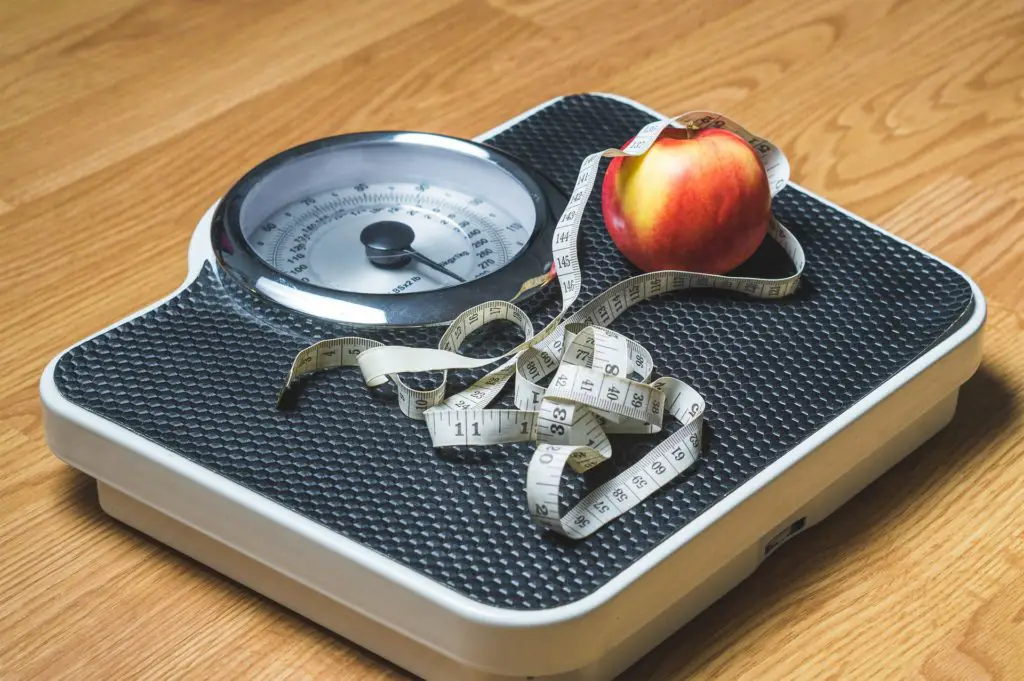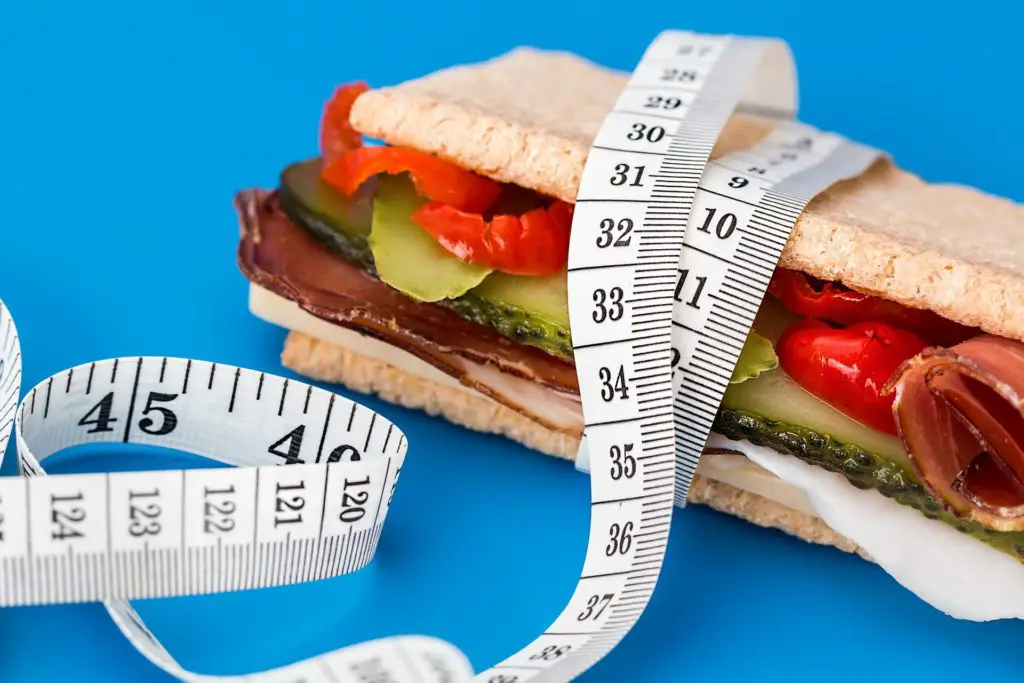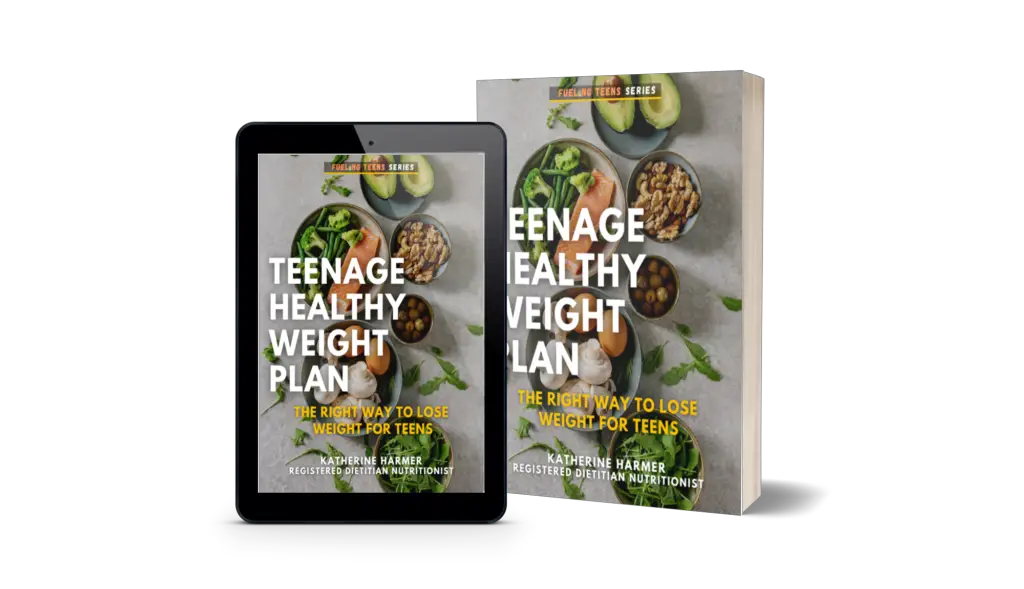15 year-olds are learning to be more independent, making their own food choices, and even buying some of their own foods. They are also at a period of crucial growth and development and need to pay attention to their eating habits. A diet of fast food and packaged snacks won’t do much good.
The best diet habits for a 15 year-old is to not skip meals, eat an appropriate amount of calories, drink lots of water, limit soda and processed foods, and choose a balance of foods in correct serving sizes from the food groups. Healthy eating habits are key!
Teenagers only learn a small amount of nutrition from school, it’s up to parents, coaches, mentors, family members, etc. to model appropriate eating behavior and teach teenagers habits that will benefit them for life and help them create a healthy relationship with food.
Read on for some of the best tips from a registered dietitian nutritionist for helping a 15 year-old maintain a healthy weight.

How Many Calories Should a 15-Year-Old Eat to Lose Weight?
A 15 year-old should follow their calorie recommendations, as estimated by the chart below from the Academy of Nutrition and Dietetics. Teenagers are at an important time of rapid growth and development and need a lot of calories and nutrients. Calorie recommendations are based on many factors including age, gender, body size, activity level, etc.
A 15 year-old trying to lose weight should still follow the calorie recommendations below and discuss their goals with a doctor or dietitian.
Recommended Calorie Intakes for Teenagers:
Female Calorie Recommendations:
| Age | Not Active | Moderately Active | Active |
|---|---|---|---|
| 13 | 1,600 | 2,000 | 2,200 |
| 14-18 | 1,800 | 2,000 | 2,400 |
| 19 | 2,000 | 2,200 | 2,400 |
Male Calorie Recommendations:
| Age | Not Active | Moderately Active | Active |
|---|---|---|---|
| 13 | 2,000 | 2,200 | 2,600 |
| 14 | 2,000 | 2,400 | 2,800 |
| 15 | 2,200 | 2,600 | 3,000 |
| 16-18 | 2,400 | 2,800 | 3,200 |
| 19 | 2,600 | 2,800 | 3,000 |
Activity Levels:
- Not Active – Minimum activity, just daily movements (walking, stairs, chores, etc.).
- Moderately Active – Standard daily activities plus 30-40 minutes of physical activity.
- Active – Standard daily activities plus 40+ minutes of physical activity.
As you can see from the charts, a moderately active 15 year-old girl needs about 2,000 calories per day and a moderately active 15 year-old boy needs around 2,600 calories per day.
A 15 year-old shouldn’t try to lose weight unless they are recommended to do so, and are closely monitored by a physician or registered dietitian nutritionist. A teenager’s weight is only concerning if their weight on a growth chart has been increasing over time in the overweight or obese categories.
Should a 15 Year-Old Lose Weight?
The typical goal for overweight teenagers is not necessarily to lose weight, but to “grow into their weight” as they hit their growth spurts. It’s common for a teen to gain weight before they hit a growth spurt and slim out. The best thing a teenager can do now is to develop healthy diet habits, not go on a diet.
See also: How Can I Tell if my Teen is Overweight?
If you are interested in weight loss as a teenager, it’s important to learn what advice is real and legitimate, and what just comes from fad diets and harmful sources. I’ve written an e-Book guide and month-long meal plan to help teens establish habits that will help them get to a healthy weight and maintain it. It will help teens develop attitudes and behaviors that will lead to a positive relationship with food and nutrition throughout their lives.
The book is available in the Downloads section of my website here – Downloadable Content.
What is a Healthy Weight for a 15 Year-Old?
The Center for Disease Control has a good Child and Teen BMI Percentile Calculator online here. It’s a fairly good estimate of your child’s BMI percentile and will classify their size into the correct category.
The categories are “underweight” at less than the 5th percentile, “healthy weight” at 5th to 85th percentile, “overweight” at 85th to <95th percentile, and “obese” as greater than the 95th percentile.
Again, this online calculator is just an estimate and not meant to be a diagnosis. Talk to your medical professional if you are concerned about your child’s category.
See also: Should I Tell My Teen They Need to Lose Weight? Tips from a Dietitian
Is it Healthy for a 15 Year-Old to Diet?
It isn’t a good idea for a 15 year-old to diet during the crucial teenage years of growth and development. Restricting calories or important nutrients may be harmful in the long run.
Only in some instances is weight loss appropriate for a teenager, and it needs to be monitored by a healthcare professional. Your teen’s doctor or dietitian (or both!) can help make an appropriate plan for your teenager to focus on weight loss (if appropriate), choose correct foods, add more physical activity, and learn to eat an appropriate amount.
The goal for overweight teenagers is to eat smarter, not necessarily eat less. An appropriate eating plan with a dietitian’s help will benefit your teenager more than a restrictive diet.
Certain medical conditions may make it harder for a teenager to lose weight (including depression or anxiety, polycystic ovarian syndrome, or hypothyroidism). Your doctor will offer recommendations and treatment options.
How Can I Diet at 15?
If you are 15 and want to go on a diet, the worst thing you can do is to look up unhealthy food tips on the internet and start following a restrictive diet. The best thing to do is to learn about mindful eating and supplying your body with the correct amount of healthy nutrients.
Restricting food isn’t the goal for a teenager trying to get to a healthier weight. The best thing a 15 year-old can do to get to a healthy weight is to create a balanced eating plan focused on nutritious, energizing foods that will keep you full throughout the day.
Don’t believe all the fad diets and health claims you read on the internet (except this one- it’s written by a dietitian, a nutrition expert), restrictive diets will be more harmful than helpful in the long run. Here are the best things a 15 year-old can do in order to get to a healthy weight:
- Learn to listen to your hunger and fullness cues and eat when you need it. It takes practice! Think about it before, during, and after eating. Learn to stop eating when you are comfortably full, don’t just try to finish your plate.
- Slow down when you are eating to enjoy your food.
- Limit screen time, especially during meals and snacks. The recommendation is 2 hours of screen time per day. Put a tracker on your phone to see how you are doing.
- Always eat fruits and vegetables with meals.
- Limit highly-processed and sugary foods. These foods still have a place in your diet, but in moderation.
- Eat a variety of foods. Don’t restrict any food from your diet. All foods fit in moderation and balance.
- Start to help in any way you can with meal planning, grocery shopping, and food preparation/cooking at home for your family. These are great skills to develop at this age that will benefit you long term as you learn to choose good foods.
- Find ways to add physical activity that you enjoy into your day.
- Get enough sleep. Teenagers typically need about 8-10 hours of sleep per night. Develop a good bedtime routine and turn off your phone!
- Drink plenty of water. Ditch the sugary beverages and even the diet soda.
- Control stress. Find ways to relieve stress besides turning to food, such as talking to a friend, going for a walk, journaling, drawing, reading, listening to music, going outside, napping, etc.
- Learn to love yourself. Everyone is different and there isn’t one perfect size, height, hair color, eye color, skin tone, shoe size, etc. Different is good! Everyone is beautiful in their own way and you can learn to be happy with who you are. Smile and make yourself believe it! Create a motivational mantra if you need it when you feel down. Something like “There is just one me, I am enough.” or “I love myself, I am beautiful”.

Things a 15 Year-Old Should Not Do to Lose Weight:
- Don’t compare yourself to others. Don’t compare your worst to their best that you see on social media. Everyone’s body is unique and everyone loses weight at different rates. Losing weight should be about feeling better, happier, healthier, and more confident, not about looking like someone else.
- Don’t skip meals, especially breakfast. Eat every 4-5 hours. Eat 3 meals and about 1-3 snacks per day.
- Don’t restrict food. Carbs are okay, dairy is okay, fat is okay, sugar is okay. Even french fries are okay sometimes!
- Don’t go on a fad diet that you see on the news or on the internet or from your favorite celebrity. All diets work at first and you’ll lose some weight, then you’ll gain back the weight later when you go back to eating normally. Those diets aren’t sustainable long-term. Plus fad diets can be really harmful for growing teenagers.
- Don’t try a “detox” or “cleanse” diet. You might feel better after trying these for a few days because you’ll be eliminating other highly processed and unhealthy foods, but you’ll also be restricting important nutrients and energy your body needs, plus you’ll gain the weight back quickly. Your body is already very good at detoxifying itself, you don’t need to drink celery juice all day to remove toxins.
How Can a 15 Year-Old Lose Weight Fast?
The best way for an overweight or obese 15 year-old to lose weight is to work with a dietitian to develop healthy habits. An RDN, or Registered Dietitian Nutritionist, will talk through a teenager’s typical eating habits and schedule to assess needs.
The goal will be to create habits to maintain a healthy weight long term. The dietitian will identify areas for improvement and work with the teenager and the whole family (ideally) to build specific goals and changes into their routine. Success is more likely if the whole family is involved in healthier choices for support, encouragement, motivation, and better habits as a team.
The Best Diet Plan for a 15 Year-Old Teenager
If you are looking for more tips to implement a healthy diet, whether or not your teen is overweight, I’ll share some ideas.
A Healthy, Balanced Diet for A 15 Year-Old Teenager Includes:
- Fruit and Vegetables: Choose 5 or more servings of fruits and vegetables per day. A serving size is about the size of your fist or 1 cup. Choose a variety of colors, types, and textures.
- Protein foods: Choose 4-7 servings per day. A serving is equal to 1 ounce of cooked meat, 1 egg, 1/4 cup cooked beans, 1 Tablespoon of peanut butter, or 1/2 ounce nuts or seeds.
- Whole Grains and Starchy Foods: Choose 6-8 servings per day. A serving is equal to 1 slice of bread, 1/2 cup of cooked grains, etc. Choose whole wheat breads/pasta/crackers, sweet potatoes, oats, brown rice, quinoa etc.
- Dairy Products: Choose 2-3 servings per day. A serving size is about 1 cup of dairy or 1 ounce of cheese. Choose low-fat dairy products (skim or 1% fat) of milk, yogurt, cheese, cottage cheese, etc. Fortified dairy alternatives are also appropriate.
- Lastly, limit sugar, sodium, and saturated fat: Teens should limit highly processed foods and foods with too much sugar, salt, and fat, such as dessert, treats, snacks, candy, cakes, and sugary drinks. These foods are high in calories and low in nutrients. They should be the “sometimes foods” in a teenager’s diet, consumed in moderation, not consumed regularly.
It can be difficult to get teenagers to eat healthier foods, especially with their busy grab-and-go schedule. You can’t change everything at once and expect the habits to stick. It takes practice and time to change up your schedule and routine, but bit by bit you’ll get there.
Pick one simple habit to work on this week and just strive to be a little bit better this week than you were last week. That could mean packing your child a lunch 1-2 more days this week, making sure your teen eats breakfast every day, helping your teen get to bed on time, serving a vegetable with dinners, etc.
Everything helps! Build it into a habit and then move on to something else that you can realistically accomplish.
Is your teen active? Check out my newest eBook for more guidance: Nutrition Game Plan for Teenage Athletes

What Should a 15 Year-Old Eat in a Day?
The best diet for a 15-year old teenager includes a balance of fruits and vegetables, whole grains, dairy or dairy alternatives, protein foods, and healthy fats. It’s important for 15 year-olds to choose foods high in nutrients (vitamins, minerals, antioxidants, fiber) and low in added sugars, salt/sodium, and unhealthy fats.
Here’s sample menu plans of a balanced diet for a 15 year-old based on the calorie recommendations for moderately active teens. For males that’s 2,600 calories per day and for females that’s about 2,000 calories per day. More or less calories may be needed based on individual differences.
15 year-olds should divide their calorie recommendations between about 3 meals and 1-3 snacks per day to keep up with their calorie and nutrient needs. Meals should be about 500-700 calories each and snacks should be about 100-300 calories.
I made one-day sample menu plan ideas so you can get an idea of what that amount of calories looks like in a day from a balance of healthy and favorite foods. These sample menu plans are an example of fairly balanced food choices for a teenager. They can work for teenagers who are overweight or normal weight.
Sample Meal Plan For a 15-Year Old Girl at 2,000 Calories:
Breakfast: 2 scrambled eggs with cheese, 1 slice avocado toast, 1 banana, 1 cup of 1% milk. 585 calories
Lunch: Pita wrap with chicken, hummus, spinach, feta cheese, and tomatoes. 1/4 cup pretzels and 1 small cookie. 488 calories
Snack: 1 cup celery sticks and 5 whole-wheat crackers with 1 Tablespoon peanut butter. 190 calories
Dinner: Shrimp rice bowl with 4 oz shrimp, 1 cup brown rice, 1/2 cup roasted sweet potatoes, 1 cup leafy greens, 1/4 cup tomatoes, 1/4 cup black beans, 1/3 avocado. 513 calories
Snack: 8 oz lowfat Greek yogurt with 1/4 cup mixed berries and 2 tablespoons granola. 223 calories
Total: 1,999 calories, with 112 grams protein, 232 grams carbs, and 69 grams fat.
Sample Menu Plan For a 15-Year-Old Boy at 2,600 Calories:
Breakfast: 2 slices buttered toast and oatmeal made with 1/2 cup oats, 1 Tablespoon flax seeds, 2/3 cup lowfat milk, 2 Tablespoons nut butter, and 1/2 cup berries. 655 calories
Snack: 1/4 cup trail mix with nuts and dried fruit. 160 calories
Lunch: chicken salad sandwich on whole wheat bun, 1/2 cup sugar snap peas, 1/2 cup carrots, 2 Tablespoons of ranch, and 1/2 cup grapes. 643 calories.
Snack: PB&J sandwich. 350 calories.
Dinner: 4 oz grilled salmon, medium baked sweet potato with butter, 2 cups green salad and 3 Tablespoons lowfat dressing. 632 calories.
Snack: 2 cups fruit and veggie protein smoothie. 200 calories
Total: 2,640 calories with 119 grams protein, 298 grams carbohydrates, and 108 grams fat.
I hope you have found some of my suggestions helpful. With a little planning ahead, these meals can be easily prepared for packaged lunches and snacks at school. Do your best, if school lunch is the best option, that’s okay! Look ahead at the menu and talk to your teen about choosing the non-fried foods and always picking fruits and vegetables.
Here are some additional meal plans I’ve created for teen athletes that you might find helpful:
- The Best Meal Plan for Teenage Athletes
- Meal Plan for Teenage Basketball Athletes
- Free Meal Plan for High School Football Players
- FREE Downloadable Meal Plan for Teen Soccer (Football) Players
How Can a 15 Year-Old Gain Weight?
An underweight teenager (check this online calculator and check with a doctor for classifying size) should consider meeting with a dietitian to plan healthy meal habits. Typically to gain weight, a teenager will be encouraged to add some high-calorie foods into their diet, but not just fatty foods like pizza and ice cream.
Here are some of my best tips for a 15 year-old to gain weight:
- Add healthier high-calorie foods like whole-fat milk products (Greek yogurt, cottage cheese, cheese, and milk), nuts, seeds, avocados, nut butters, etc.
- Plan to eat 3 meals per day and 1-3 snacks. Do not skip meals.
- Eat at least 5 servings of fruits and vegetables each day.
- Include high-quality protein at each meal such as lean meat, fish, eggs, as well as plant-based proteins such as beans, lentils, nuts, etc.
- Plan meals around starchy carbohydrates such as grains, potatoes, rice, oats, etc.
- Practice listening to hunger cues, notice when you are hungry and don’t ignore the feeling. Bring snacks with you during the day when you need it.
- If there are underlying medical, emotional, or mental problems, check in with a medical professional.
How Much Body Fat Should a 15 Year-Old Have?
Body fat is another common question. Body fat changes throughout life, and especially with puberty as a teenager’s body goes through growth and developmental changes. It’s normal and expected to gain or lose some fat during the teenage years. If you continue healthy habits, you’ll likely be at a healthy rate of body fat even if you look different than when you were at age 12.
A healthy rate of body fat for a 15 year-old teenage girl is typically between 21-23 percent. A healthy rate of body fat for a 15 year-old teenage boy is typically between 10-12 percent. Don’t stress if your number is a little higher or lower, boys typically lose fat during the teenage years and girls typically gain some.
Your body needs fat, it is important to keep you warm, protect your organs, help with absorption, and many more important functions. You put your bones and muscles at risk if you don’t have enough fat, but having too much extra fat could increase risks of health problems and pain.
Each of us have different genetics which affects our metabolisms. We all store extra energy as fat in our bodies differently, there is no perfect body fat percentage.
It can be tricky to measure body fat percentage because a lot of the gym scales aren’t very accurate. Your doctor probably doesn’t normally measure body fat, but tracks your growth through BMI, height and weight.
Underwater weighing, Bod Pod (air displacement plethysmograph), and skinfold measurements are techniques used to measure body fat percentage, but are not always very common or accessible. BIA (Bioelectrical Impedance Analysis) scales or handheld devices can be fairly accurate (but also skewed based on quality and other factors).
They are typically not recommended for individuals younger than 18. Because of these factors, it may be difficult to measure exact body fat percentages in teenagers.
Summary
Eating enough nutritious foods, avoiding highly-processed foods and sugary beverages, getting enough exercise, and controlling sleep and stress are the best ways for a 15 year-old to lose weight.
ONLY teenagers that are recommended by their doctor should work on losing weight, most overweight teenagers should focus on developing healthier habits with food instead.
It’s common for many normal, healthy weight teenagers to feel the need to be thinner and want to lose some extra pounds. This isn’t recommended and could be harmful long term.
Parents who notice signs of a possible eating disorder should discuss treatment options with their teen’s doctor. Signs include: obsession with food choices, constant dieting, avoiding social situations with food, obsession with body size, evidence of vomiting or using laxatives, excessive exercise, isolation, frequent avoidance of eating, drastic weight change, etc.
Related Questions:
How Should a Teenager Lose Weight? The best way for a teenager to lose weight is to develop a healthy eating plan, and not focusing on dieting or restricting food. Start some healthy habits by eating an appropriate amount of food, don’t skip meals, drink lots of water, and choose a balance of nutritious foods.
How Many Carbs Should a 15 Year-Old Eat? Typically carbohydrate recommendations for 15 year-olds are 45-65% of total calories. For a 2,000 calorie diet that would be about 225-325 grams of carbohydrates per day, and for a 2,600 calorie diet that would be about 293-423 grams of carbohydrates per day. This is especially important for growing, active teenagers. See also: How Many Carbs Does a 15 Year-Old Teen Need? Ask a Dietitian!
Teenagers usually should not be on a low-carb diet during these important years of growth. Carbs come from grain products, fruit, dairy products, starchy vegetables, beans, and sugary foods.
How Much Sugar Should A Teenager Eat? Sugar recommendations from the American Heart Association for kids and teenagers are no more than 6 teaspoons of added sugars per day, or 25 grams of sugar. Added sugar can hide in many foods such as sauces, dips, breads, yogurt, cereals, etc. It can be tricky to stay within the guidelines.
Check out my post How Much Sugar Should a 14 Year-Old Have Per Day? for more specific sugar recommendations for teenagers and examples of 6 teaspoons of sugar.
See also: Are Artificial Sweeteners a Good Idea For Kids? Why Sugar-Free Isn’t Always Best
Other Popular Posts from FuelingTeens:
- How Much Should a 16 Year-Old Boy Eat?
- How Many Eggs Can A Teenager Eat Per Day?
- Are Homemade Cookies Healthier for You Than Store-Bought?
- How Many Calories Should a 14 Year-Old Eat?
- Is It Okay for Teens to be Dairy-Free?
- Should A Teenager Count Calories?
References
Academy of Nutrition and Dietetics. How Many Calories Does My Teen Need? Written By Esther Ellis, MS, RDN, LDN. Published October 4, 2019. https://www.eatright.org/food/nutrition/dietary-guidelines-and-myplate/how-many-calories-does-my-teen-need
Written by Katherine Harmer, Registered Dietitian Nutritionist
Fueling Teens is a participant in the Amazon Services LLC Associates Program, an affiliate advertising program designed to provide a means for sites to earn advertising fees by advertising and linking to Amazon.com. We also participate in other affiliate programs which compensate us for referring traffic.

